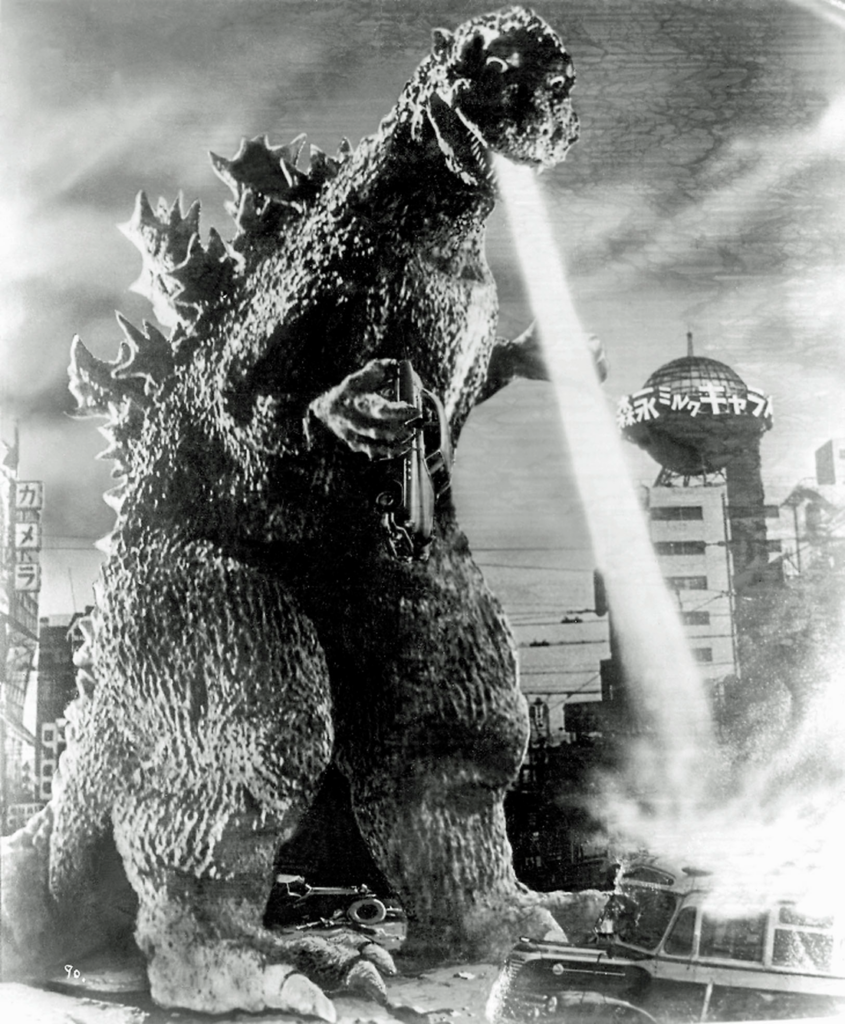
https://omniversal-battlefield.fandom.com/wiki/Godzilla_(1954)
In a multiplicity of views there is clarity. There are many ways to look at a movie either from the protagonist side, the antagonist or a detached observer. For a minute, I would like to put ourselves in the place of the monster from the original Godzilla film, Gojira, 1954. This is not the same film as the American version Godzilla King of the Monsters, 1956 which represents a campy bastardization of the original. In a clear case of art imitating life Gojira depicts serious content that serves as a warning over the dangerous effects of H-bomb testing relevant at the time. Why take the side of Godzilla? Because if we don’t we are in danger of missing the lesson he is trying to teach. A monster warns us of impending doom. This is not an inevitable scenario. We have a way of escaping; otherwise, the warning has no meaning. This cautionary tale is meant for us to change our way. To repent from bomb building before it’s too late. A monster always brings hope that we are not too far gone. The message Godzilla presents is as simple as it is sublime, respect nature, for as much as we think we have dominated, we are equally dependent on her for survival. Godzilla brings karmic balance which has up to now been a rout. He is everything we fear that will come upon us as a result of natural disaster: flood, tsunami, earthquake, uncontrollable fire, pandemic and relentless war. Most of all he represents divine punishment for carelessly splitting the atom. The movie is a protest over nuclear bomb testing. The movie was inspired by the results of H-bomb testing in 1954 and the poisoning of the Japanese fishing trawler Lucky Dragon no. 5, which was in the wrong place at the wrong time, covered in radioactive ash its crew members suffered radiation sickness and one eventually died. The movie is set against the background of Hiroshima and Nagasaki. Director Ishiron Honda used the wreckage of Hiroshima as the setting for Godzilla’s rampage through Tokyo. The original film has references to the atomic holocaust that were later cut from the American version, especially the last telling scene that warns if H-bomb testing does not cease the world will suffer from the return of Godzilla.
The creature was awoken by H-bomb testing in the South Pacific. The monster was peacefully hibernating in his underwater lair for millions of years when he was rocked by the nuclear blast. The beast was horribly wounded, covered in keloid-like scares over his whole body. Honda was taking the effects of radiation poison and applying them to the monster, which represents technology’s devastating effects on nature. Godzilla is a living H-Bomb. He wreaks a terrible vengeance for the destruction of his native habitat. In subsequent films he’s returning to his original breeding grounds in Japan only to find it desecrated with urban development, high tension wires and petroleum tanks. Godzilla cleans house with his powerful atomic ray which levels everything it touches. Despite all the carnage we tend to forget Godzilla was a victim too. His actions are in self-defense; don’t the laws of war apply equally to him or are we guilty of speciation that devalues all life except our own? Godzilla is reclaiming for Mother Nature what was lost through human progress. The monster’s perspective is one of anger and fury at his displacement and eviction from his natural environment.
The actions of a few affect the many. Nuclear scientists represent all people and from Godzilla’s POV all mankind must pay. This is a struggle of species dominance over the earth. This is a fight to the death. The monster has been made homeless and disfigured. He has been shot at, bombed and electrocuted and when this wasn’t enough an even more horrible weapon was deployed against him the oxygen destroyer, which ultimately ended his suffering. Humanity narrowly averted extinction perhaps for the last time.
